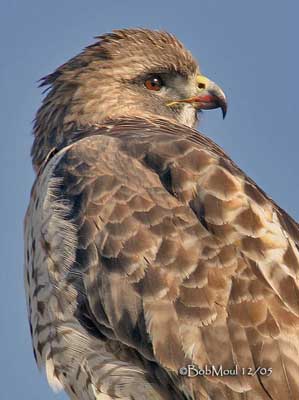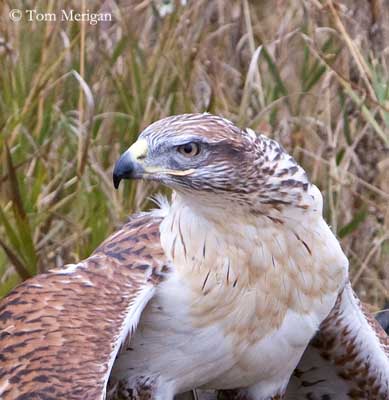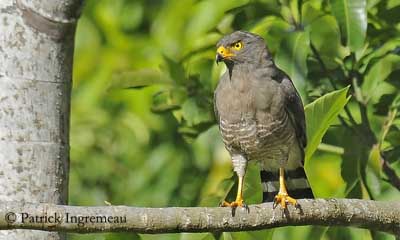
Text by Nicole Bouglouan
Photographers :
Alfredo Colón
Puerto Rico Wildlife
Jean Michel Fenerole
Photos d’Oiseaux du monde
Tom Grey
Tom Grey's Bird Pictures
Patrick Ingremeau
TAMANDUA
Eduardo Andrés Jordan
MIS AVES – AVES DE ARGENTINA
René Lortie
http://rlortie.ca/
Tom Merigan
Tom Merigan’s Photo Galleries
Bob Moul
Nature Photography
Pete Moulton
Pete Moulton Photography
Philippe et Aline Wolfer
GALERIE
Sources :
HANDBOOK OF THE BIRDS OF THE WORLD Vol 2 by Josep del Hoyo-Andrew Elliot-Jordi Sargatal - Lynx Edicions - ISBN: 8487334156
HAWKS, EAGLES AND FALCONS OF NORTH AMERICA by Paul A. Johnsgard - Smithsonian Institution Press - ISBN: 1560989467
SORA Searchable Ornithological Research Archive (Blair O. Wolf)
Page article Hawks of genus Buteo - Introduction
Hawks of Genus Buteo
Hawks of the world, except Australia
1 - The American hawks: 14 species + Hispaniola, Galapagos Is. and Hawaii.
Some species which frequent woodland and woodland-edge areas are regarded as “woodland Buteos”. There are the Roadside Hawk (Buteo magnirostris), the Ridgway’s Hawk (Buteo ridgwayi), the Red-shouldered Hawk (Buteo lineatus) and the Broad-winged Hawk (Buteo platypterus).
The Grey Hawk (Buteo lineatus) is also included in this small group, but the species is already classified in the 7th group, due to its marked similarity with the Lizard Buzzard (Kaupifalco monogrammicus).
These species share some common features such as plumage pattern, proportions, distribution and behaviour. They differ from open-country Buteos by lack or rarity of dark morph of plumage. They hunt by direct search methods rather than soar-dive behaviour, and have very varied diet without usual or indispensable food item.
They could be more closely related to Leucopternis (7th group) than to Buteo, and are sometimes placed in Asturina as the Grey Hawk.
Outside the small differences between the subspecies, these hawks have mainly rufous to chestnut plumage.
Except the Ridgway’s Hawk from Hispaniola which is monotypic, the others have several subspecies which differ in tonality of plumage colours.
The four species have black bill and cere, eyes, legs and feet are yellow.

Buteo magnirostris
The Roadside Hawk’s plumage varies over the large range in Central and South America, except Peru, Chile and S Argentina and extreme south.
Head and upperparts vary from grey to dark brown, and the underparts are white or chestnut with fine barring or streaking according to the race.
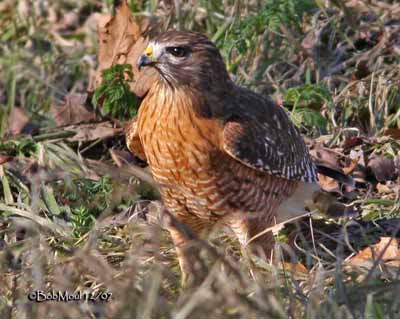
Buteo lineatus
The Red-shouldered Hawk is more reddish in plumage on the underparts and scapulars with barred belly and blackish spotted-white pattern on wings and tail. As the previous species, the plumage coloration varies slightly between the races.
This hawk is present in S Oregon and California on the Pacific coats, and in the eastern part of the USA, from S Canada to Florida and S Texas.
The Ridgway’s Hawk is present on Hispaniola and adjacent islets, and is monotypic. The grey head recalls the Roadside Hawk, but the reddish shoulders are like in Red-shouldered Hawk. Upperparts are brownish-grey and underparts are rufous barred white.
The Broad-winged Hawk occurs in the eastern part of the USA, Central America, Puerto Rico and Lesser Antilles. As in previous species, the races differ in pattern and intensity of underpart coloration. The upperparts are brown. The nominate race has rufous underparts barred white on lower breast and belly, whereas the subspecies have whitish underparts streaked brown or rufous.

They are forest species, and frequent various types of forest, clearings and edges. Some of them such as the Roadside Hawk and the Red-shouldered Hawk may be seen in urban areas and cities.
They feed on small mammals, insects and reptiles, amphibians, fish, rodents, birds and lizards. They hunt from perches such as branches, fences or poles at edges of opening or clearing, but they also perform slow, gliding flight and direct searching method.
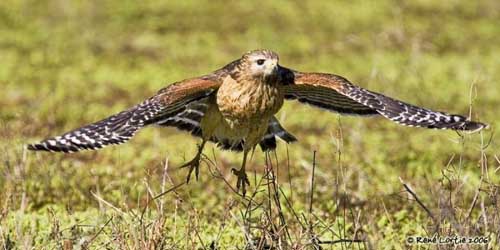
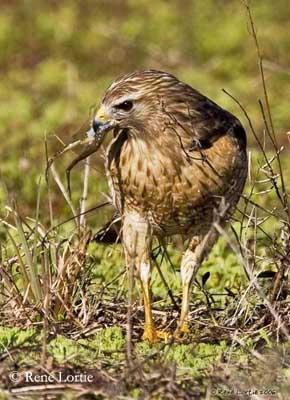
During the breeding season, they usually perform aerial displays around the nest-site, often both birds soaring together. They can be fairly vocal near the nest.
The breeding season varies according to the species and the range. The stick nest is built in tree, and the interior is lined with green vegetation, leaves, moss, rootlets and sometimes bark chips.
The clutch contains 2 or 3 eggs, sometimes more. The incubation lasts between 28 and 37 days. The fledging period varies from one to three months, and the young are fed by the adults for some weeks more.
The nest-site is defended against intruders such as other raptors and Corvidae species.
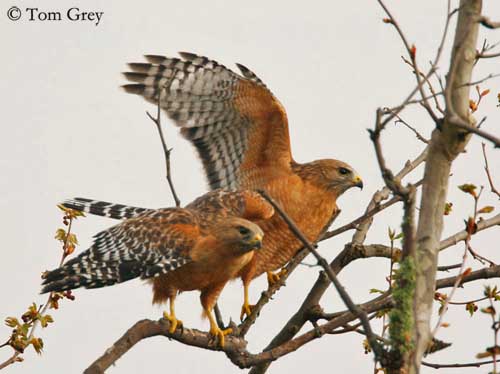
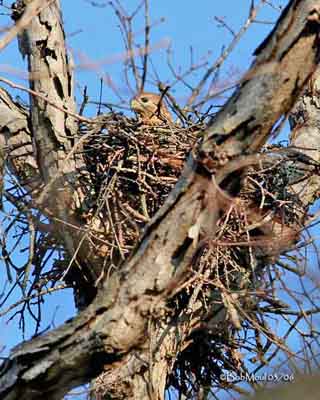
The Roadside Hawk and the Ridgway’s hawk are resident in their range, whereas the two other species perform migrations and movements.
The Red-shouldered Hawk of the northern parts of the range migrates to winter from C USA to NE Mexico. The populations of C USA are resident. The birds of California and Florida remain on their breeding territory all year round.

The Broad-winged Hawk is highly migratory in N America except the Caribbean and S Florida’s populations. The migratory birds move southwards to South America, following the overland route through Central America from Guatemala to S Peru and Brazil.
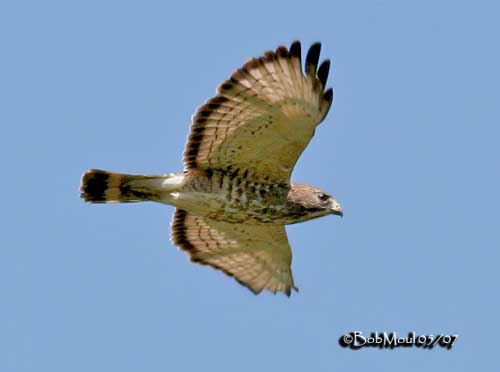
Buteo platypterus
The Ridgway’s Hawk has restricted habitat where it is locally common and even rare over the entire range. Shooting and deforestation are the main causes of the large decline. Some populations persist on small islands but they are now heavily disturbed by increasing human population.
The three other species are not globally threatened.
The Roadside Hawk is widespread and very common.

Buteo magnirostris
The Red-shouldered Hawk has suffered decline due to loss of habitat, but this species is able to adapt itself to urban settings.
The Broad-winged Hawk is common in its range, but the island’s populations are threatened by loss of primary forest and habitat alteration.
These forest species are globally threatened by deforestation which destroys their favourite areas
for hunting and nesting. However, these raptors are able to adapt themselves to the changes, and to survive somehow or other if the shooting does not deprive them of their chances.
Some of the ten other American species have different morphs and we can find pale, dark or rufous plumages in the same species. This is the case of the White-rumped Hawk – Buteo leucorrhous), the Short-tailed Hawk (Buteo brachyurus), the Swainson’s Hawk (Buteo swainsoni), the White-tailed Hawk (Buteo albicaudatus), the Red-backed Hawk (Buteo polyosoma), the Puna Hawk (Buteo peocilochrous), the Hawaiian Hawk (Buteo solitarius), the Red-tailed Hawk (Buteo jamaicensis), the Rufous-tailed Hawk (Buteo ventralis) and the Ferruginous Hawk (Buteo regalis).

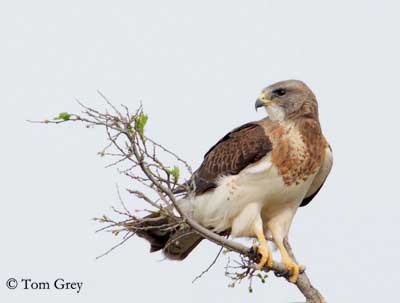
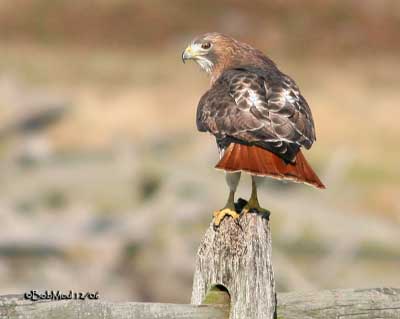
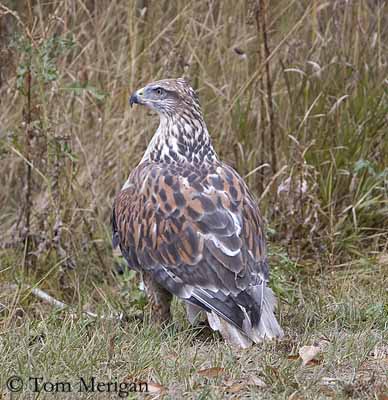
Only three species lack other morphs, the White-throated Hawk (Buteo albigula), the Galapagos Hawk (Buteo galapagoensis) and the Zone-tailed Hawk (Buteo albonotatus).
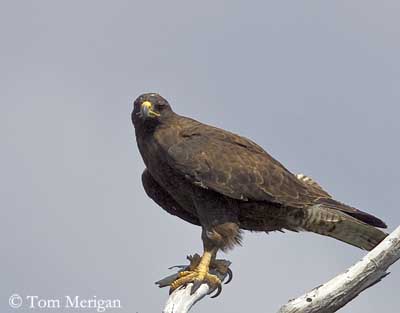
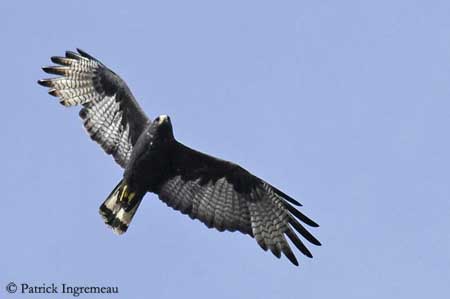
The hawks with several morphs are usually dark above and paler below. In dark morph, upperparts and underparts are dark grey to blackish, sometimes with whitish tail barred black.
In pale morph, the upperparts are dark grey to blackish, but the underparts are white, or whitish with darker breast, or whitish with dark brown to rufous streaks.
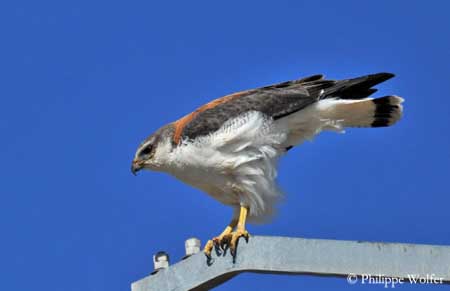
Some hawks may also have paler upperparts, turning pale brown to chestnut.
There are some rufous morphs, with reddish-tinged plumage overall, often darker on the upperparts.
The variations of plumage coloration are important according to the species and the subspecies, and also the habitat and the range.
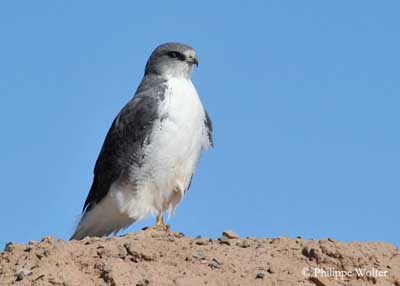
White-tailed Hawk
Geranoaetus (Buteo) albicaudatus
Pale morph
The bare parts are usually similar with black bill, yellow cere, legs and feet. The eyes vary from pale yellow to hazel or brown.
All these hawks are stocky, with broad wings and tail.
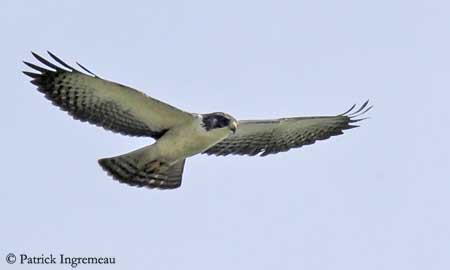
Short-tailed Hawk
Buteo brachyurus
Pale morph
The species with only one plumage phase are darker, with dark brown, dark grey-brown or blackish upperparts and dark underparts, except in the White-throated Hawk which has white underparts with fine dark streaks and white thighs with rufous bars.
Unlike the first forest species, all these hawks frequent more open areas, sometimes near marshes, tropical lowlands, foothills, steppes, deserts, steep rocky areas in mountains, savannahs, scrubs, caatinga (thorny areas), cultivated fields, open grasslands and even urban areas.
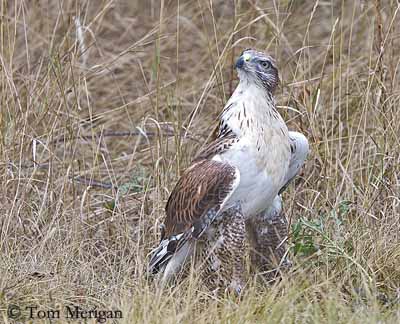
These open lands are often adjacent to forest, dense forest and edges, humid tropical and deciduous forest, gallery forest, coniferous and mixed pine and oak woodlands and exotic lowland forest near sea-level.
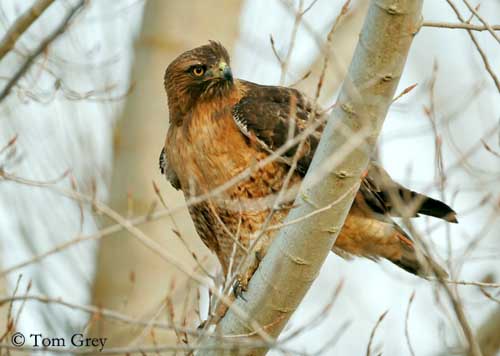
Some of them can be seen at high elevation in Peru, Colombia and Bolivia, between 500 and 4600 metres according to the species and the range. The Red-backed Hawk occurs up to 4600 metres and the Puna Hawk may be found up to 5000 metres, both in Bolivia.
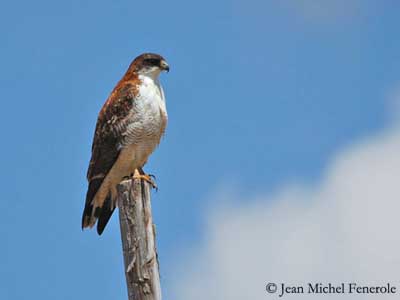
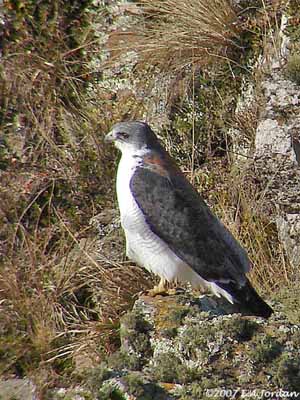
The island hawks, Galapagos and Hawaiian Hawks, can be seen in all habitats such as open areas or closed forest in Galapagos, and lowland cultivated areas and all types of forests in Hawaii.
The Ferruginous Hawk avoids the high elevation and interior of forest, but it frequents cliffs and rocky outcrops. But they also frequent the sea-level areas.
They are American hawks, with many of them living in South America, as well on the Pacific coast as in north and east of the continent. Only two species, the Red-backed Hawk and the Rufous-tailed Hawk occur in extreme south.
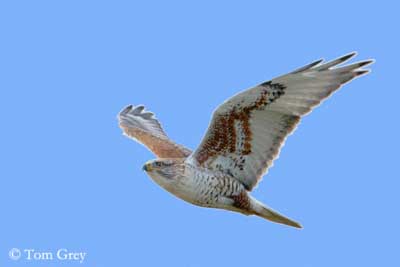
Buteo regalis
Usually, the raptors living in North America migrate to winter in South America, following the route overland through Central America. The birds of South America are often resident.
The Red-tailed Hawk from North America is resident in the south of the range and migratory in the north.
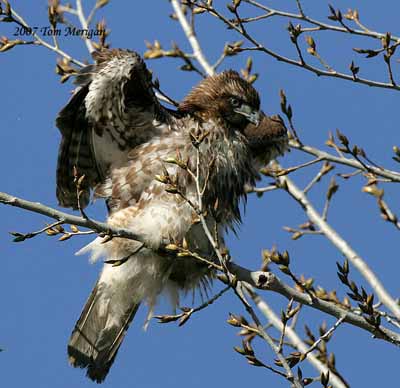
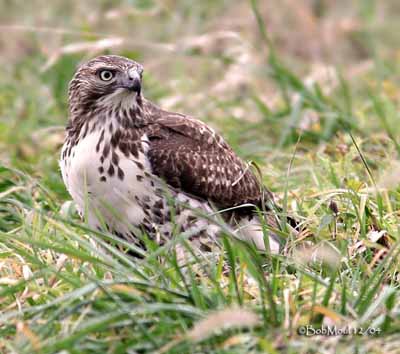
Red-tailed Hawk - Buteo jamaicensis-----------------------------------Juvenile First year (right)
The Ferruginous Hawk occurs in the eastern part of the USA. The juveniles perform post-breeding dispersion, whereas the northern populations move southwards to winter in Texas.
Hawks are very good fliers. They have powerful flight with steady wing-beats and soar easily. Their broad wings and tail make them agile and manoeuvrable in the air when they hunt in open areas or display close to the nest-site.
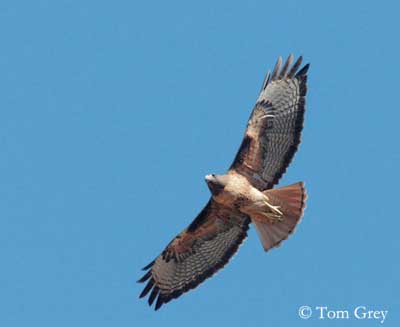
They feed on mammals, from rodents to rabbits, adult birds and chicks, reptiles, lizards, amphibians and large insects. They usually hunt from perch, and also hawk insects in flight.
Some of them hunt by soaring, gliding and hovering.

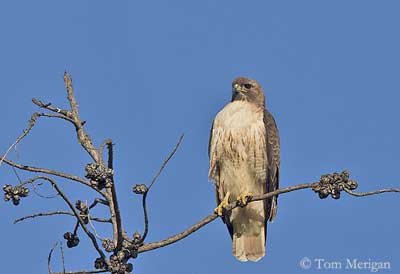
TheZone-tailed Hawk soars slowly and suddenly dives on prey, either on the ground or in tree canopy.
The Red-tailed Hawk performs 80% of the attacks in humid forest from flight, but also performs low flight between 10 and 50 metres above the ground.
The Ferruginous Hawk uses the same methods, but it also takes preys on the ground after aerial survey.
The Swainson’s Hawk moves clumsily on the ground where it snatches up preys, but it also hunts from perch or in flight.
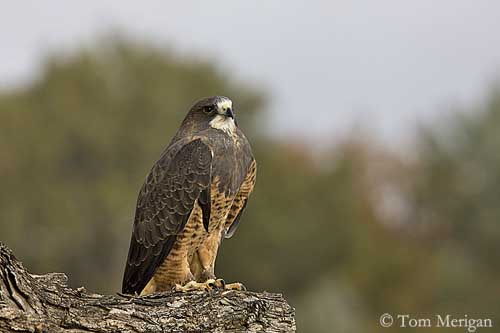
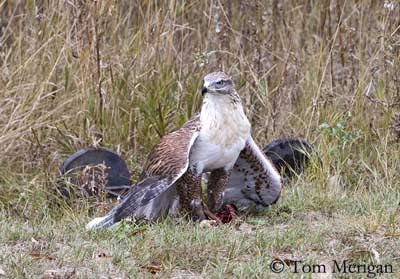
Buteo regalis
The females are larger than males and they often catch larger preys.
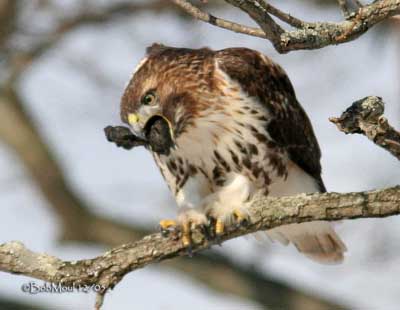
Buteo jamaicensis
During the breeding season, the young are mainly fed with mammals and birds. Insects are caught in post-breeding season, according to the range.
These raptors perform several displays before to copulate. Aerial displays are often seen above the nest-site, but they also display on the ground. This is the case of the White-tailed Hawk.
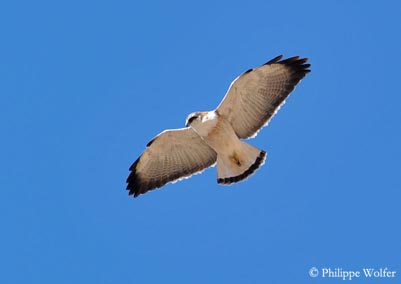
White-tailed Hawk
Geranoaetus (Buteo) albicaudatus
Pale morph
The resident birds maintain and defend the territory all year round. Most species are solitary nesters, but some of them such as the Galapagos Hawk and the Puna Hawk are usually monogamous, but they also may perform co-operative polyandrous mating-system, with several males participating in copulation, incubation, feeding of young and defence of the territory. These groups have better breeding success than the monogamous pairs.
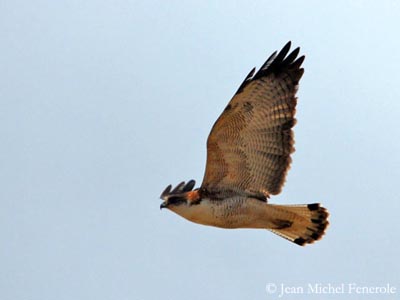
The nest is usually bulky, made with sticks and lined with grass, leaves or pieces of bark, according to the materials found around the site. It is placed in tall trees, bushes, cactus, cliffs or human structures and buildings in urban areas.
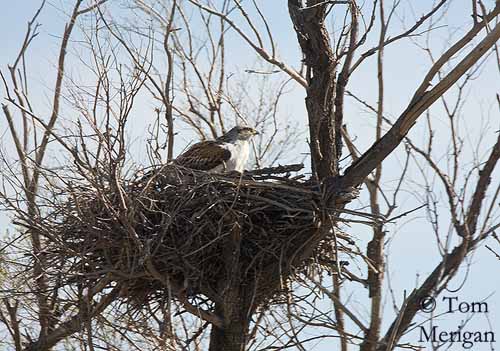
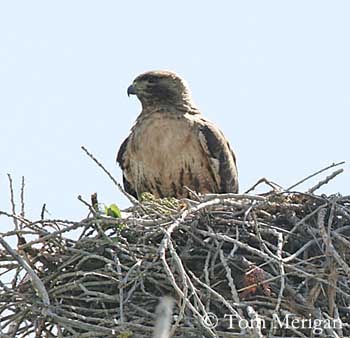
Ferruginous Hawk - Buteo regalis --------------------------------------- Red-tailed Hawk - Buteo jamaicensis
The clutch contains between one and three eggs. The incubation, often by both sexes, lasts between 30 and 40 days. The young are fed by both parents, and the nesting period lasts about 42-63 days, with 74 days in Puna Hawk, but usually 45-48 days. The young stay with their parents for some weeks more before to become independent.


Buteo swainsoni - Juvenile
The juvenile of some species perform post-breeding dispersions, or migrate with the adults.
They have browner plumage overall, with heavily streaked underparts and often scaled effect on the upperparts, due to the pale feather’s edges.
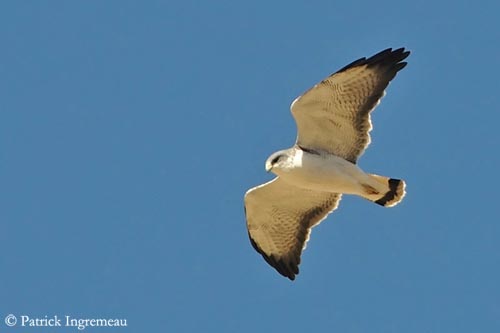
Geranoaetus (Buteo) polyosoma
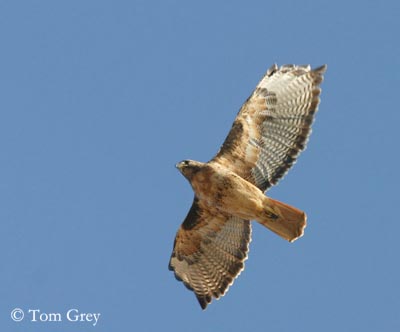
Buteo jamaicensis
Like numerous raptors’ species, the hawks of genus Buteo are suffering several kinds of threats. But if usually the deforestation is an important threat, for several hawks of the open country, it allows them to expand the range. However, the trees are necessary for nesting, and some species threatened by habitat loss such as the Ferruginous Hawk, accepts the nest-platforms.
The White-tailed Hawk also increases its habitat due to deforestation. The species is relatively common in its range and occurs near large cities.
The White-throated Hawk is rare and locally common.
The Swainson’s Hawk has suffered serious local declines in California and Oregon due to use of pesticides. It could be possibly threatened.
Both Galapagos and Hawaiian Hawks are rare with restricted habitat. They are evaluated as threatened.
The Variable Hawk is relatively secure and locally common but it is declining in Chile.
The Puna Hawk is now a subspecies of the previous. It is relatively common in its range.
The Zone-tailed Hawk is widespread and locally common.
The Red-tailed Hawk is the commonest hawk over most of North America.
The Rufous-tailed Hawk is evaluated as near-threatened.
Some of these species need more survey and research because they are living at high elevation and difficult to see. They always suffer persecutions and degradation of the habitat, disturbances near the nest, involving the abandon of the eggs and causing nest failure.
We have to respect these birds of prey and their habitat. The public needs education and the raptors need protection, because in spite of the laws, they still are often killed.
